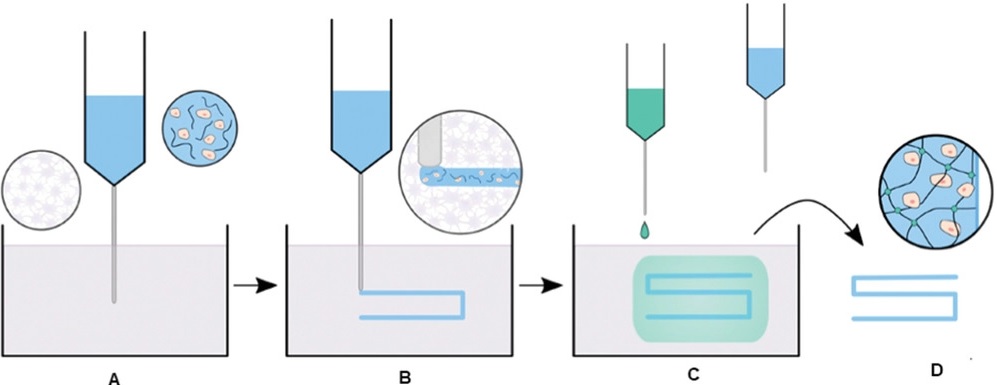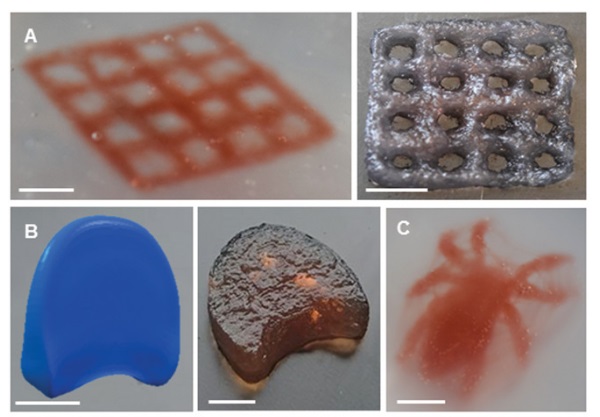Researchers from the University of Birmingham have developed a new 3D printing method for soft materials which could enable the manufacture of artificial medical implants.
Known as Suspended Layer Additive Manufacturing (SLAM), this technique uses a polymer-based hydrogel containing particles for a self-healing gel. Liquids or gels can be injected into this medium to build 3D forms.
“The hydrogel we have designed has some really intriguing properties that allow us to print soft materials in really fine detail,” explains Professor Liam Grover, leader of the study published in Advanced Functional Materials.
“It has huge potential for making replacement biomaterials such as heart valves or blood vessels, or for producing biocompatible plugs, that can be used to treat bone and cartilage damage.”

SLAM 3D bioprinting
The team developed SLAM as an alternative to Freeform Reversible Embedding of Suspended Hydrogels (FRESH), which uses gels to form a slurry bath into which the printed material is injected. According to the University of Birmingham scientists, this method can result in frictions within the gel medium which can distort the printing process.
SLAM uses low viscosity biopolymers into a self‐healing fluid‐gel matrix. Such fluid gels are formed upon the introduction of shear stress during the sol–gel transition to produce a network of entangled gel microparticles. This differs from the idle ‘bulk’ gels used in FRESH which form polymer networks in the absence of shear.
With this process, the researchers aimed to demonstrate how particles in the gel can be sheared, or twisted “so they separate, but still retain some connection between them,” as stated in the study. This interaction creates the self-healing effect, allowing the gel to support the printed material for objects with precise detail, and no leaking or sagging.

Soft materials and additive manufacturing
3D printing soft materials have been seen as a big challenge for scientists as they require support to avoid sagging. Through SLAM tests, the team found that the agarose support bath allows for further methods of crosslinking, which includes collagen formulations.
The researchers highlight this as an advantage in regenerative medicine. “The method enabled the successful fabrication of bulk, intricate, dual-phase, and phase‐encapsulated hydrogels from a variety of biopolymer materials that are currently widely investigated in regenerative medicine.”
“Overall, SLAM is a promising technique for producing delicate soft tissues, complex soft tissue structures, and interfaced tissues.”
“Fabrication of Complex Hydrogel Structures Using Suspended Layer Additive Manufacturing (SLAM)” is co-authored by Jessica J. Senior, Megan E. Cooke, Liam M. Grover, and Alan M. Smith.

For more of the latest 3D printing news subscribe to our newsletter, follow us on Twitter, and like us on Facebook.
Searching for new talent or seeking a career change? Search and post 3D Printing Jobs for opportunities and new talent across engineering, marketing, sales and more.
Featured image shows a 3D print scaffold created using the SLAM method. Photo via the University of Birmingham.


